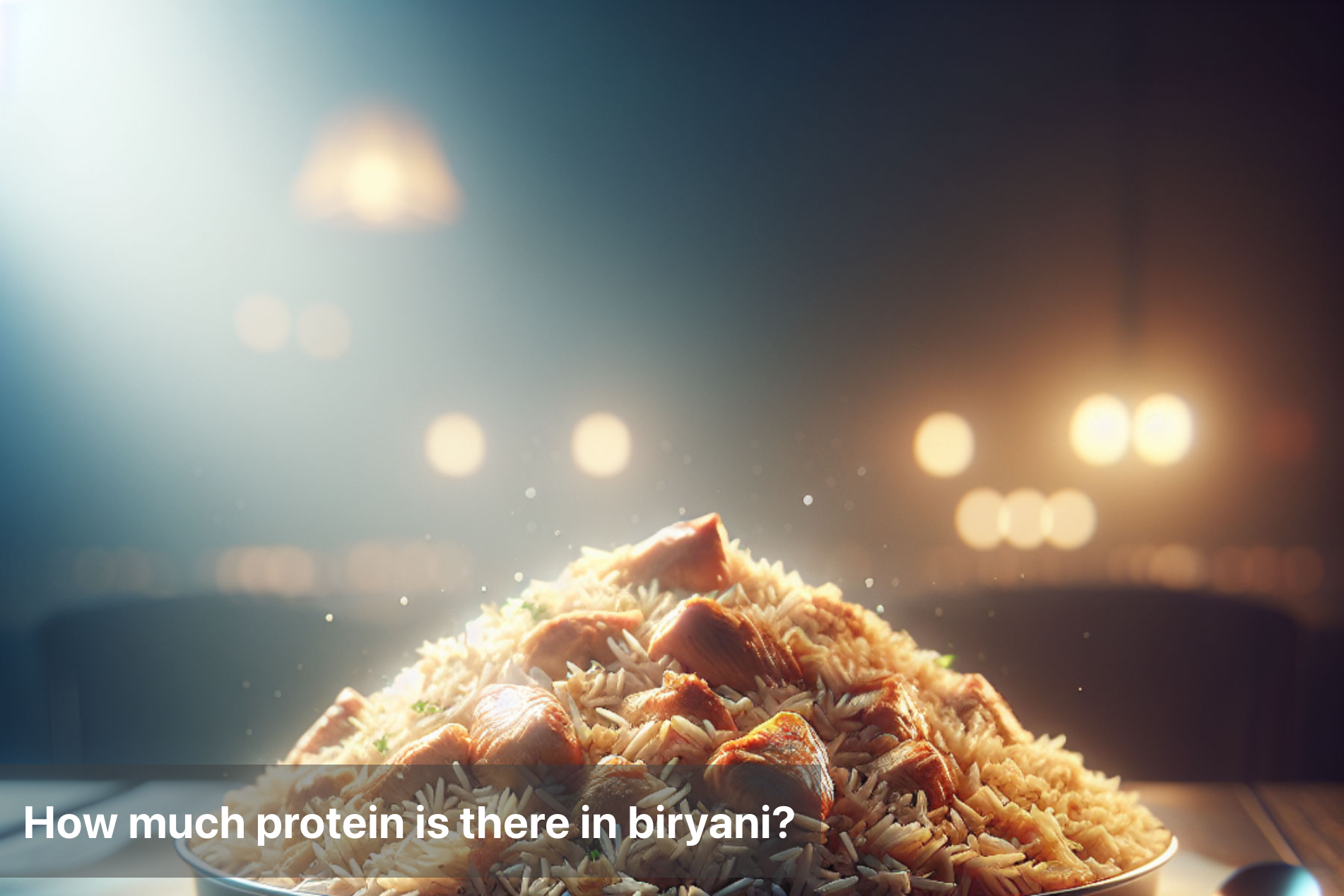
How much protein is there in biryani?
Biryani is a beloved dish that originated in the Indian subcontinent and has gained popularity worldwide. It is a flavorful and aromatic rice dish cooked with a unique blend of spices, meat, vegetables, or seafood, creating a harmonious melange of flavors. The dish is known for its rich and indulgent taste, making it a favorite choice for special occasions and gatherings.
The key ingredients used in biryani include basmati rice, meat (such as chicken, mutton, or beef), yogurt, onions, and a variety of spices like cumin, coriander, turmeric, and cardamom. The combination of these ingredients results in a dish that is not only delicious but also rich in flavors and textures.
One of the reasons behind biryani's popularity is its versatility, allowing for various regional and personal adaptations, each adding a unique twist to the classic recipe. Whether served with raita, salan, or a simple salad, biryani has found its way into the hearts of food enthusiasts across the globe.

Nutritional Information of Different Biryanis
Nutrient |
Chicken Biryani |
Mutton Biryani |
Vegetable Biryani |
Paneer Biryani |
Fish Biryani |
Egg Biryani |
|---|---|---|---|---|---|---|
Calories (kcal) |
300-400 |
350-450 |
200-300 |
250-350 |
300-400 |
250-350 |
Protein (g) |
15-25 |
20-30 |
5-10 |
10-20 |
20-25 |
12-18 |
Fat (g) |
10-15 |
15-20 |
5-10 |
10-15 |
10-15 |
10-15 |
Carbohydrates (g) |
35-45 |
35-45 |
35-45 |
35-45 |
35-45 |
35-45 |
Fiber (g) |
2-4 |
2-4 |
4-6 |
3-5 |
2-4 |
2-4 |
Sodium (mg) |
500-700 |
500-700 |
400-600 |
400-600 |
500-700 |
500-700 |
Biryani at home made easy
Marinate Chicken:
Mix chicken with yogurt, ginger-garlic paste, red chili powder, turmeric powder, and salt.
Marinate for at least 30 minutes.
Cook Rice:
Rinse rice thoroughly.
Boil 4 cups of water with bay leaf, cloves, cardamom, cinnamon, and salt.
Add rice and cook until 70% done (about 7-8 minutes).
Drain and set aside.
Prepare Biryani Base:
Heat oil or ghee in a large pan.
Sauté sliced onions until golden brown.
Add marinated chicken and cook for 5-7 minutes.
Add chopped tomatoes and cook until soft.
Add green chilies, mint, coriander, and garam masala. Cook for 10-15 minutes.
Layer Biryani:
In the same pan or a separate pot, layer chicken and gravy with rice.
Drizzle saffron milk (if using) on top layer of rice.
Optionally, add fried onions on top.
Serve:
Mix gently before serving.
Garnish with fried onions and lemon wedges.
Tips to Boost Protein Content in Biryani
Adding extra protein to your biryani is a fantastic way to enhance its nutritional value without compromising on taste. Here are some creative ideas to increase the protein content in your biryani:
-
Incorporate Nuts:
Adding a handful of almonds, cashews, or pistachios to your biryani not only amps up the protein but also adds a delightful crunch and richness to the dish.
-
Introduce Tofu:
For a vegetarian twist, consider including cubed tofu in your biryani. Tofu is an excellent plant-based source of protein that absorbs the flavors of the spices and rice beautifully.
-
Include Legumes:
Legumes like chickpeas, black lentils, or kidney beans are powerhouse ingredients when it comes to protein. Mix them into your biryani for a hearty and nutritious meal.
-
Quinoa Power:
Replace a portion of the rice in your biryani with quinoa. Quinoa is a complete protein, meaning it contains all essential amino acids, making your biryani not just tasty but wholesome too.
-
Eggcellent Addition:
Hard-boiled eggs sliced and layered within the biryani provide an additional protein boost along with a burst of flavor.
By incorporating these protein-rich ingredients, you can elevate your biryani from a delicious meal to a balanced and nourishing culinary experience.

Nutritional Facts: Protein in Biryani
Protein plays a crucial role in the realm of nutrition, and when it comes to biryani, its significance should not be underestimated. Incorporating protein-rich ingredients in biryani not only enhances its nutritional value but also contributes to a well-rounded and healthy diet. Whether you opt for chicken, mutton, or vegetable biryani, the protein content in these variations can vary, but its impact remains consistent.
In the realm of nutrition, protein serves as a fundamental building block for muscles, skin, and other vital tissues. By adding sources of protein like chicken, mutton, tofu, or legumes to your biryani, you are not just creating a delicious meal but also fueling your body with essential nutrients. These protein-rich elements boost the satiety level of the dish, keeping you full and satisfied for a longer duration.
Embracing biryani as a protein-packed dish can be a flavorful and convenient way to meet your daily protein requirements. It allows you to relish a delectable meal while ensuring that your body receives the necessary nourishment. So, next time you savor a plate of biryani, remember the valuable role of protein in making it not just a culinary delight but also a wholesome addition to your diet.
This Blog post is an initiative by Lo! Foods, to provide accurate and Nutritionist / Doctor approved information related to Health. Lo! Foods is India's leading brand for Everyday Functional Foods. Foods designed for specific Health conditions or Needs. Lo! Foods also runs India's largest range of Low Carb Healthy Cloud Kitchens, under the brand names of Lo!, ProteinChef, ATH (All Things Healthy) and DiabeSmart.



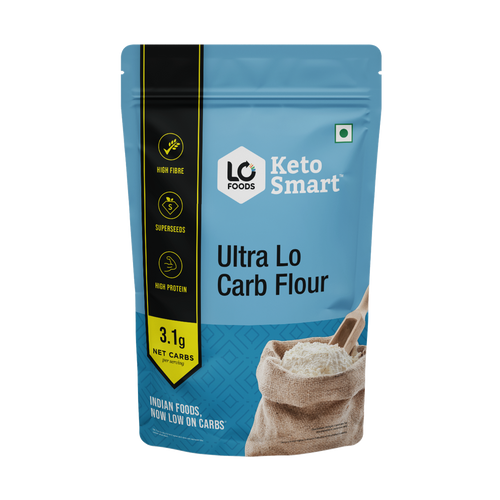
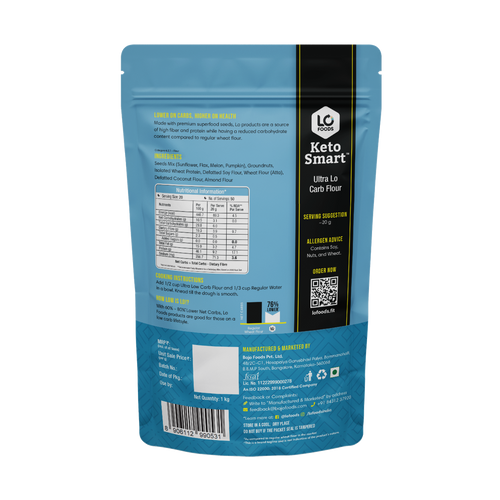

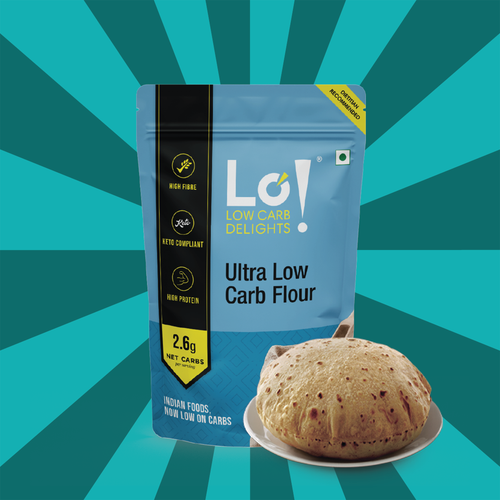


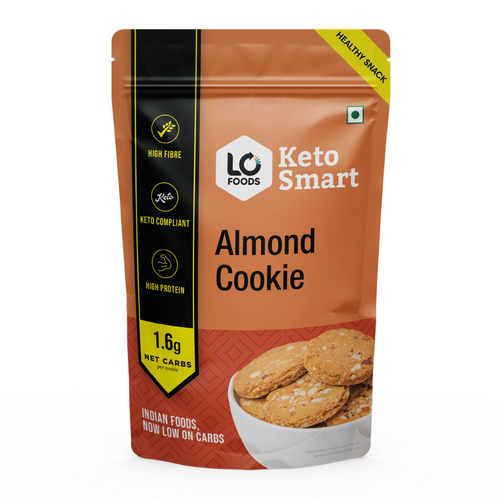





Leave a comment
Your email address will not be published.